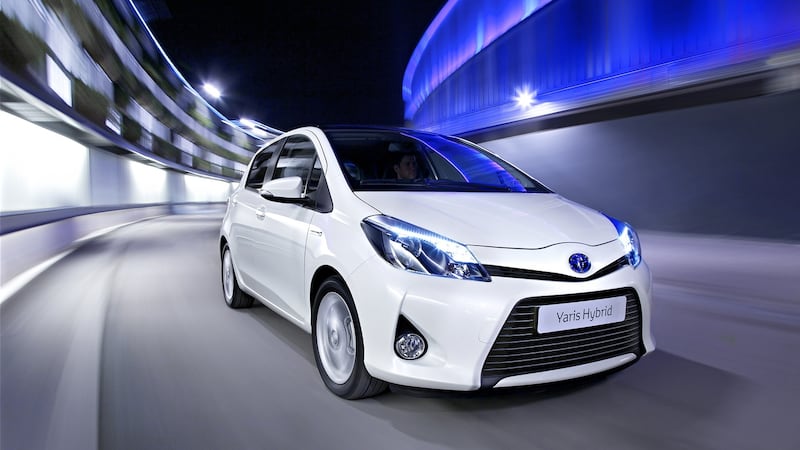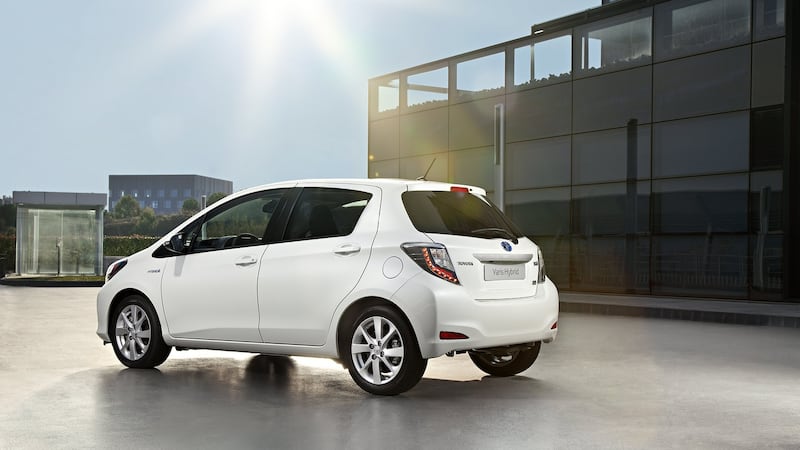A few weeks back, Toyota Ireland sent us a missive regarding the current levels of hybrid sales in its range. Now, of course, as with all such, you have to take the self-aggrandising and corporate tub-thumping as given, but there were a few interesting kernels of information contained therein.
Since the 172 numberplate changeover at the start of July, 34 per cent of Toyota’s sales in Ireland have been hybrid models. That’s pretty significant, even in a falling market, when you consider how big a brand Toyota is in this country, and how influential it can be. After all, Toyota’s original successes here were based almost entirely on people, back in the 1970s, taking a chance on a Corolla and realising that, who’d have thunk it, here was a family car that didn’t break down or need a new alternator every other week.
While there is a distinct urban/rural divide in all this (diesel is still popular in the provinces, it seems), there’s no getting away from the fact that more than half of all new Auris models sold are now hybrids, and more than three-quarters of the C-HR crossover.


And more than a third, 37 per cent to be exact, of Yaris sales are taken up by this, the Hybrid, which is quite some going. How? Because it’s so damned expensive, relative to a standard Yaris.
This Yaris Hybrid Luna Sport, which we’ve been testing, clocks in at a robust €23,310. There’s no directly similar model with either the 1.0 or new 1.5-litre petrol engines, but a 1.0 Luna will set you back a mere €17,575, leaving you plenty of money to peruse the options list. A Luna-spec car with the impressive new 1.5-litre petrol is €18,995, which is stiff enough for most small car buyers to need a lie-down and possibly some ibuprofen.
But of course, the Hybrid model is packed with clever, state-of-the-art technology, right? Well, not quite. The actual hybrid system in the Hybrid is kinda old, dating back to the previous-generation Prius and still uses old-tech (but hugely reliable and simple) nickel-cadmium batteries in place of the (more modern but occasionally explodey) lithium-ion cells. There’s none of the multi-mode hybrid transmission as seen in the Lexus LC coupe, just an old-school CVT. Still, Toyota, as part of a €90-million investment in updating the Yaris range as a whole, has attacked the Hybrid with a full bag of spanners. There is a new subframe and engine mounts, plus revised driveshafts, all designed to reduce noise and raise refinement. Plus, while the bones of the hybrid system may be old, there has been a great deal of tinkering with software and sub-systems to try and make it all a touch smoother.
All of which has worked, and worked really quite well. The original Yaris Hybrid was a bit of a wretched experience – noisy, thanks to the engine revving its head off through the CVT transmission, and woefully thirsty if you dared to drive it anywhere but on city streets. On motorways, its fuel consumption would plummet to Bugatti-esque levels.
No longer, thankfully. A steady clip up the M1 from Dublin to Belfast proved that the Yaris Hybrid can now easily crack the 50mpg barrier on a long run, and around town it gets even better. Trickle in stop-start traffic, and make fullest possible use of the Hybrid's batteries and electric motor (you can trickle along at low speeds, for short distances, on just the electrics) and you can do better than 60mpg. Impressive.
It also spends less time mooing at high rpm, in the manner of a distressed cow, when you ask for acceleration. This is a classic tendency of any car with a CVT, and while it has most definitely not been eliminated, it has been reduced a little.
The Yaris Hybrid is never what you call a fast car, far from it, but it’s lively enough around town and doesn’t feel out of its depth on the motorway. Toyota has spent a good deal of time and effort improving the steering and and suspension, in the search for more exciting responses, but the Hybrid still feels more languid than lairy – it’s fine; sure footed and competent at all times, but not especially engaging. The improvements to the interior are welcome though – the overall sense of quality is much higher now, and the cabin is less plastic-y. Good front seats too, which are supportive on a longer journey, and there’s nothing wrong with the space in the back. The revised styling looks neat too, and the new two-colour option adds a faintly sporting air to a distinctly un-sporting car (new GMRN hot hatch excepted).
It’s not the cheapest hybrid on the market anymore (that honour falls to the €16,495 Suzuki Ignis, although that’s not a hybrid in the same sense as the Yaris Hybrid) and that price tag is still somewhat problematic – yes, the Yaris Hybrid is an impressive piece of low-carbon engineering, but the hard fact is that a 1.0-litre version is much cheaper to buy, and only €10 a year more to tax.
Clearly, the Yaris Hybrid, and its hybrid brethren within the Toyota range, are gaining a great deal of sales traction from the current debate over urban air quality, and people’s concern about future-proofing their motoring. In that sense, the Yaris is just about ideal a way to dip your toe into partially-electric motoring as you’ll find. But it’s worth remembering that plain old petrol might still be the better, and certainly better value, choice.
The lowdown:
Toyota Yaris Hybrid Luna Sport. Price: €23,310 as tested; Yaris range starts at €15,950. Power: 99hp. Torque: 111Nm. 0-100kmh: 11.8sec. Top speed: 165kmh. Claimed economy: 78.4mpg (3.6 litres/100km). CO2 emissions: 82g/km. Motor tax: €170.
Verdict: Surfing the wave of the diesel debate, but simpler, cheaper 1.0 might still be a better bet overall.
Our rating: 3/5














